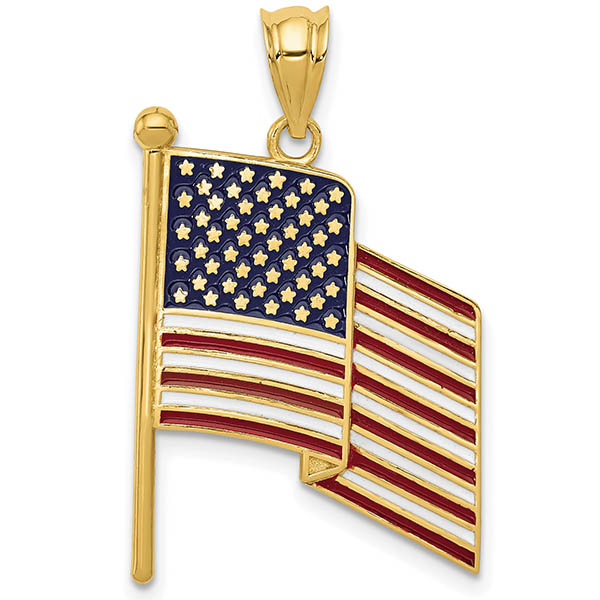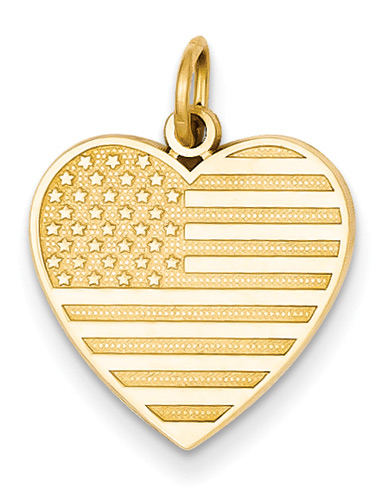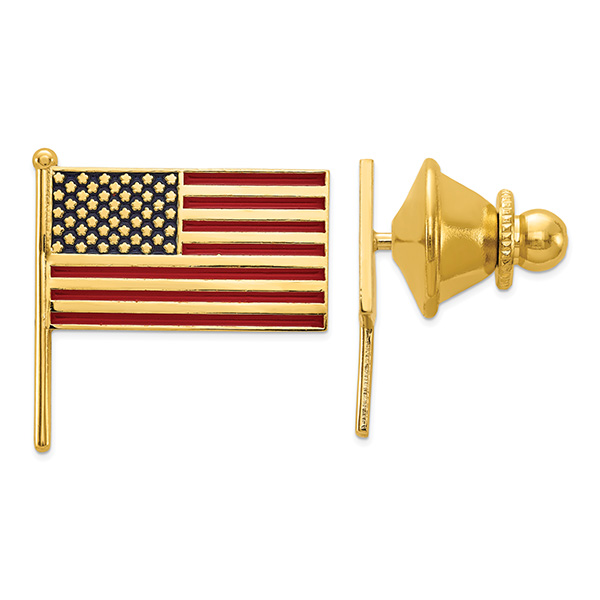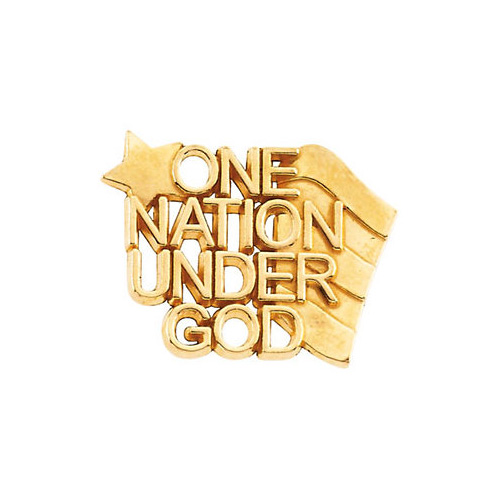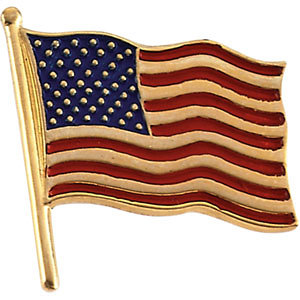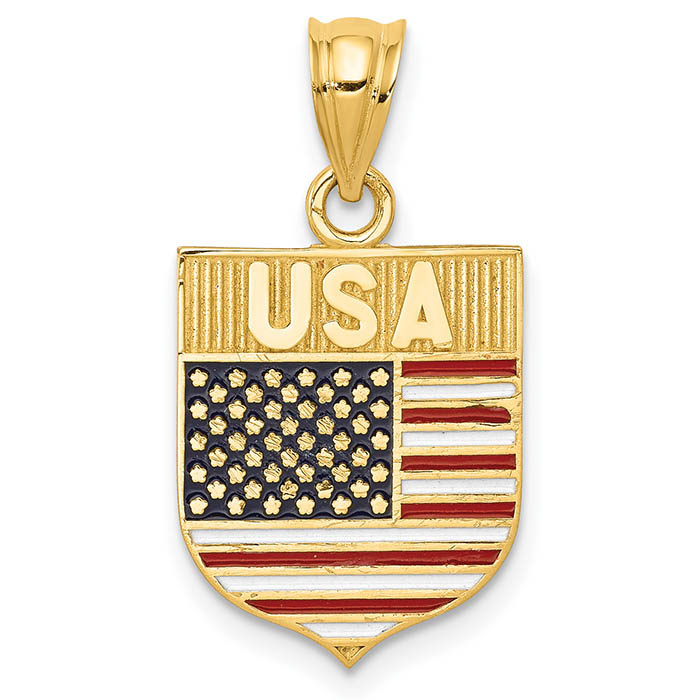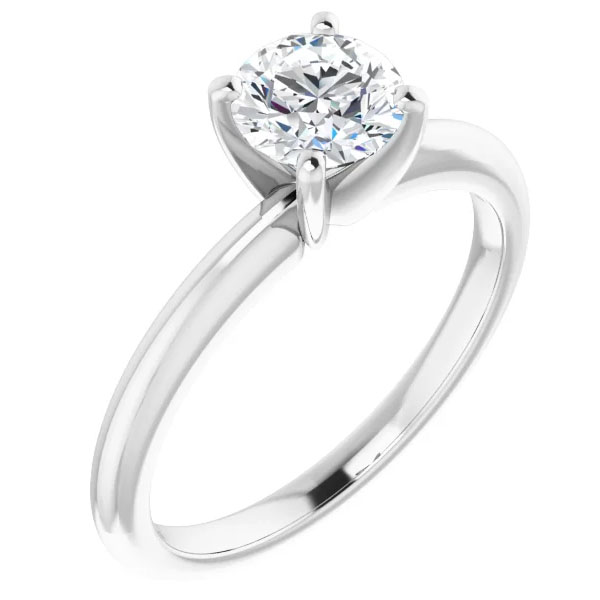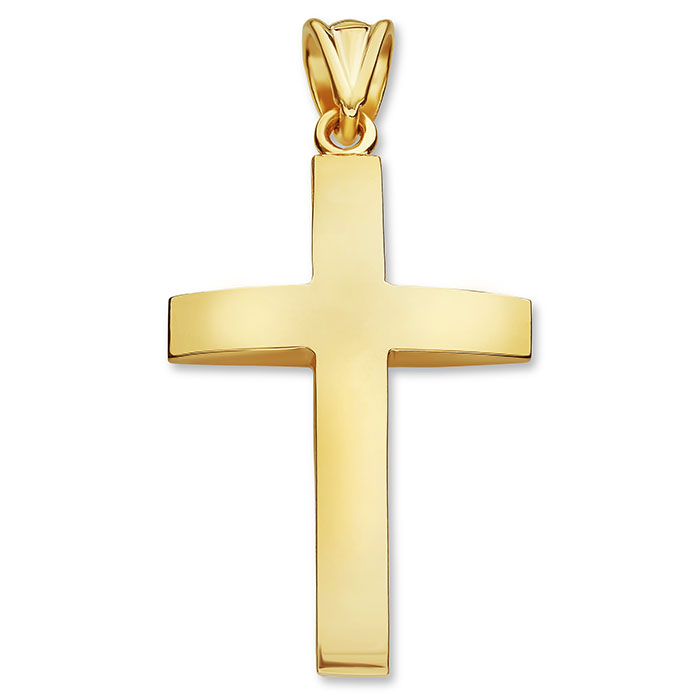History of the American Flag
The American Republic has a fascinating history, as does its flag. America is the product of lengthy and fierce battles fought for liberty and independence, as patriots throughout our history shed their precious blood in the cause of freedom and individual liberty.
The American flag is a testament to our nation’s growth and all that we stand for as a nation, from our U.S. Constitution to our Bill of Rights and the rugged individualism and exceptionalism that has inspired so many generations, making the American flag jewelry featured on this page even the more unique and meaningful.
During the month of June 1777, the Continental Congress established an act advocating for an official flag for the new, infant United States. As per the words of the resolution:
“The Resolution has established that the American Flag will have thirteen stripes, alternate white and red stripes, thirteen stars for the union, depicting white in a new field to represent a new constellation.”
Origin of the American Flag
The first U.S. flag came into existence in 1777 and since then, it underwent modification twenty-six times. The flag with forty-eight stars stayed in effect for forty-seven years until a version featuring forty-nine stars became official on June 4th, 1959.
Modifications such as the design, arrangement, shape, stripes, and stars of the flag were made to reflect the addition of new states, inspiring art and patriotic jewelry for ages to come. The modern American flag is presently the 27th design since its inception.
The thirteen horizontal stripes you see, alternating between six white and seven red stripes, depict the thirteen colonies. The stars, on the other hand, represent the current Union’s fifty states.
Symbolism of the American Flag
The colors of the American flag also have a deep symbolic significance. The white color stands for innocence and purity, red for valor and hardiness, while blue represents justice, perseverance, and vigilance.
President Eisenhower had ordered a flag featuring fifty stars on August 21st, 1959 and it did not become official until July of 1960. Each time a state came under the de facto covenant Union, a new star joined the flag to reflect it.
This is why we now live under a flag featuring fifty stars and thirteen stripes, as depicted in items such as American flag lapel pins. Since then, the American flag with fifty stars has been reigning for sixty-one years, becoming the longest-used version of the U.S. flag.
Evolution of the American Flag
When an American citizen looks back at the American Revolution today, all they often look at is the final form and the independence we won from Great Britain. What most of us fail to ponder upon is the years of work behind it and the brave men who died to make us free. We can honor such men who serve today in our armed forces through US Military jewelry and other accessories that honor their service. But the journey of the flag’s evolution is a reminder of every stage of development.
The movement did not begin for independence; rather, it aimed to win seats in the Parliament. What began as a protest soon was blown into a full-fledged revolution for independence. You only need to see our flag closely to note how it reflects each fighting stage of the American Revolution.
The very first use of stripes in the flag was a prophecy of the new nation that was to form: America. This depiction was first evident in the “Sons of Liberty” flag. Many might not know this, but the “Sons of Liberty” were the ‘Tea Party’ members, the people who threw the tea chests into the Boston Harbor.
These were also the same members who launched the protests after the Stamp act. They produced a flag a little later, which closely resembled ours, only that it had lesser stripes, and one could display it both vertically and horizontally.
The Congress’ Role in the Flag’s Evolution
Historically, Americans refer to the flag of Continental Colors as the first flag of the nation.
The American Revolution began in 1775. It was at this time that the Continental Congress held a meeting in Philadelphia when George Washington, a Virginian militia Colonel, stepped forward in his uniform.
He volunteered to take charge of the troops lined outside of Boston. When George Washington left Philadelphia, two flags accompanied him. The first flag that the soldiers fought under was The Continental or The Grand Union.
13 Stripes of the American Flag
The features of this flag included alternating white and red stripe patterns, with thirteen stripes standing for the thirteen colonies. The only point in which this flag differs from the Sons of Liberty Flag is the Union Jack or the King’s Colors.
This flag was specifically symbolic of the fact that 13 united colonies were fighting for America. The second flag accompanying George Washington was the Headquarters Flag. The only difference between the present American flag and the Headquarters version was that it contained six-pointed stars instead of the five-pointed that we see in our present flag.
Congress had not legally accepted flags with stars, until July 1776, until the momentous Declaration of Independence. Neither did Congress accept the ‘white in a blue field’ till a year had passed. Till that time, the Continental Congress would only use the flag of the Continental colors, as it contemporaneously regarded it.
When Congress finally declared independence in 1776 from Great Britain, it passed an act stipulating what the new American flag must feature.
Who Designed the First American Flag?
As the legend goes, an upholsterer named Betsy Ross designed the first flag. The only evidence we can find of this fact is the bill that Francis Hopkinson, one of the first signers of the Independence Declaration, received. The bill reads that for designing the flag, Francis Hopkinson owed Betty Ross two casks of ale.
Francis Hopkinson first wrote to the Continental Admiralty Board on May 25, 1780, and asked for a “quarter cask of the public wine” for designing the “Flag of the United States of America,” among other things. (Source: Hastings, George E. “The Life and Works of Francis Hopkinson.” Chicago: Univ. of Chicago Press. 1926. pp. 240 and 241.)
After writing to the Admiralty Board, Hopkinson wrote three letters to the Continental Congress and asked to be paid in cash for designing the naval flag of the United States, among other things. (Source: Hastings. pp. 241-43.) The only difference between Hopkinson’s United States flag and U.S. naval flag was that the former had seven white stripes/six red stripes, and the latter had the opposite. The official U.S. flag of June 14, 1777, which was sponsored by the Continental Marine Committee, was based on Hopkinson’s naval flag. (Source: Williams, Jr., Earl P. “Did Francis Hopkinson Design Two Flags?” NAVA News [newsletter of the North American Vexillological Association]. Oct.-Dec. 2012. No. 216. pp. 7-9.)
The Flag Manufacturers Association of America (FMAA) also issued the following Tweet on February 4, 2021: #FlagFact: The designer of the American flag was Francis Hopkinson, a signer of the Declaration of Independence as a delegate from New Jersey.
For American patriots today, there are plenty of ways to incorporate the flag into our lives and honor our history, including the use of American flag jewelry, patriotic artwork and even political memes on social media that help us remember what made America great. Let us keep the flame of freedom alive and always stand for the red, white and blue and the 13 stripes that has kept our history bright and our nation sovereign and free.



